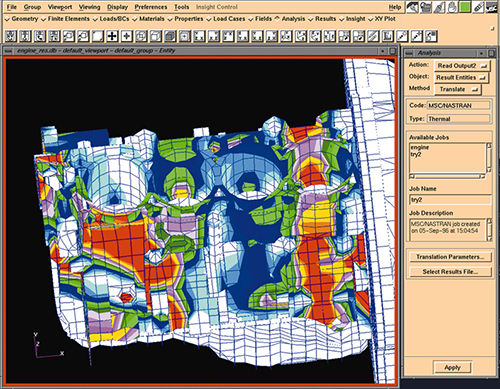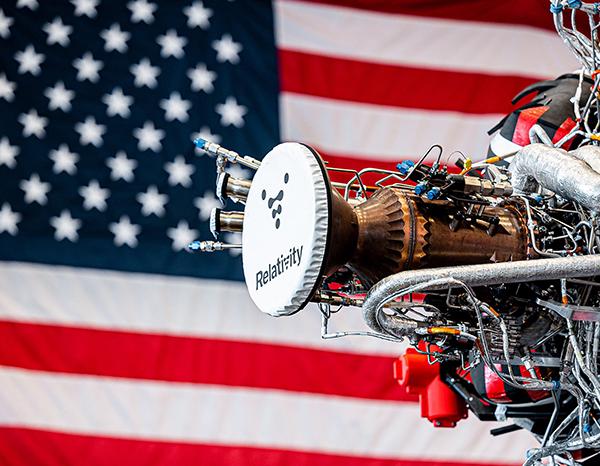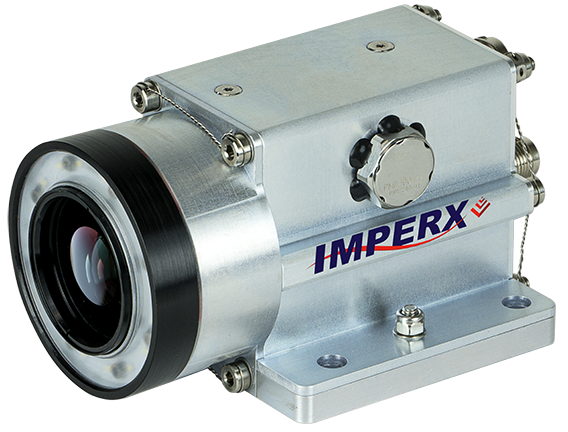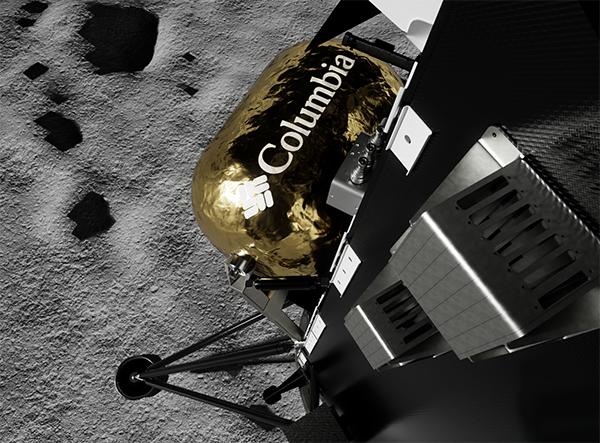Computerized Engineering
The pervasive use of computers throughout the field of manufacturing has meant moving products more quickly to market, saving costs, and enhanced quality and performance. Computer-aided engineering has been a boon to the transportation industry, enabling the building of stronger and lighter aircraft, spacecraft, ships, and automobiles. This essential engineering tool has its roots in NASA research.
In the 1960s, Goddard Space Flight Center engineer, Thomas Butler, conceived a new dimension of mathematical precision in evaluating stress in complex structures. Under contract to NASA, the MacNeal-Schwendler Corporation (MSC) of Los Angeles, California developed an operational software version of, what was dubbed, the NASA Structural Analysis (NASTRAN®) program. Early adoption of NASTRAN proved of great value to NASA centers across the nation. NASTRAN later became available through the Computer Software Managment and Information Center (COSMIC). In 1973, the emergence of NASTRAN into the automotive industry was fortuitous, as an oil embargo triggered a flurry of research into lightweight cars, rapid transit vehicles, and fuel-efficient engines.
MSC's co-founder, Dr. Richard MacNeal, and his colleagues procured the rights to market versions of NASTRAN in 1982, gearing the software to an expanded industrial role. Subsequently, MSC proprietary versions of the computer problem-solver tool have become a mainstay for a diversity of applications, from heat transfer to acoustics.
In January 1995, MSC signed a cooperative agreement with the Langley Research Center for the inclusion of NASA's Finite Element Interface Technology into MSC/NASTRAN. Under the three-year agreement, MSC has received Langley-developed technology for modeling structural systems. This transfer of technology to non-aerospace companies from Langley is viewed as important to developing U.S. competitiveness in a global market. In July 1997, MSC announced the latest version of MSC/NASTRAN for Windows.
Over the years, MSC has grown to become the world's largest provider of mechanical computer-aided engineering (MCAE) strategies, software, and services. The company is at the forefront of providing finite element analysis (FEA) products.
FEA is best described as an analytical method used by engineers to help determine how well structural designs survive in actual conditions, such as loads, stress, vibration, heat, electromagnetic fields, and reactions from other forces.
Using FEA, virtually any structure, no matter how complex, can be divided into small elements. Those smaller elements form a finite element model that simulates the structure's physical properties. The model can then be subjected to rigorous mathematical examination, with an engineer able to see results in any number of formats.
Ultimately, FEA significantly reduces the time and costs associated with prototyping and physical testing. That testing can involve a diversity of products, from coffee makers to golf clubs and electric guitars to the Space Shuttle. MSC/NASTRAN, the firm's flagship product, can model and analyze almost any material, including composites and hyperelastics.
Another major product from MSC is MSC/PATRAN, which was also derived from early NASA work. MSC/PATRAN provides an open, integrated, MCAE environment for multi-disciplinary design analysis. This powerful tool integrates computer-aided design, test, and analysis software. It can be used early in the design-to-manufacture process to simulate product performance and manufacturing processes, giving the user a way to visualize and interpret data with new understanding. In October 1997, the Japanese firm, Denso, the world's largest auto parts supplier, adopted MSC/PATRAN as a core product in that company's 3-D and virtual prototyping work.
For three decades, the unique prowess of MSC/NASTRAN has proven itself time and time again. It has permeated the development of structures and systems, advancing the art of transportation. This computer application, having thousands of users worldwide, has played a key role in maintaining swift and steady progress in a dynamic technological arena.
®NASTRAN is a registered trademark of NASA.

Stresses and strains of this engine are displayed by using MSC/NASTRAN computer software.













